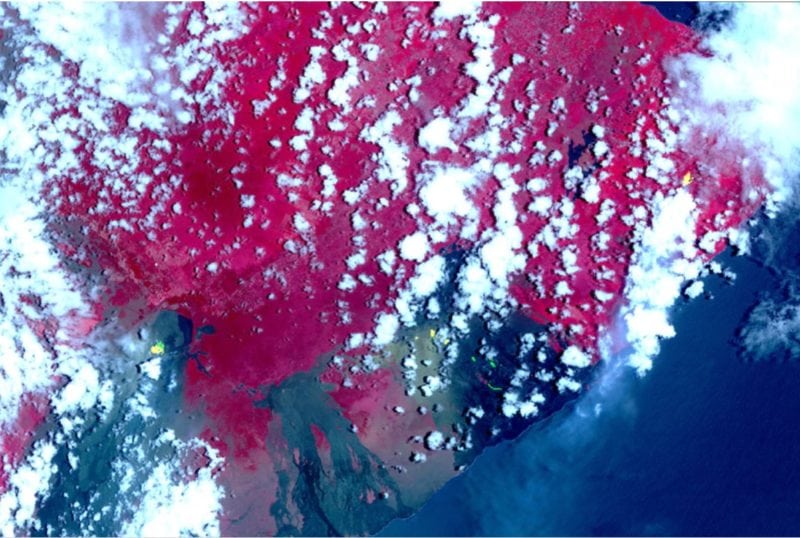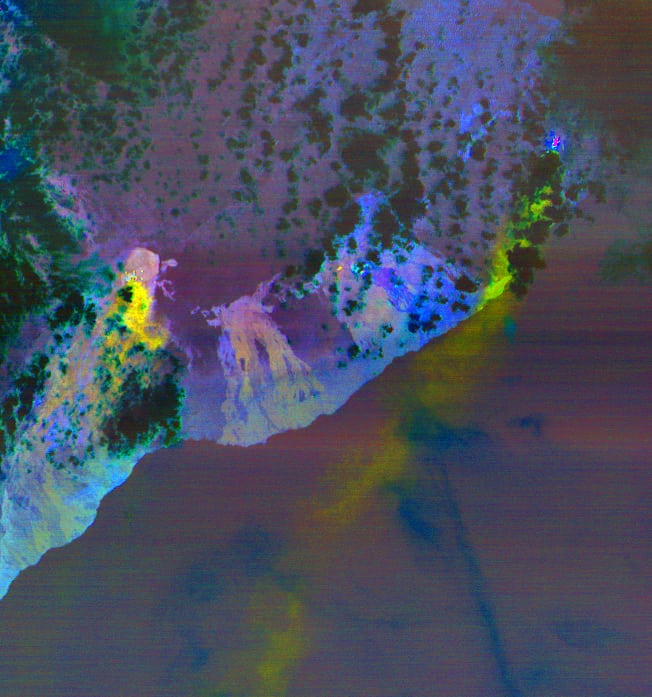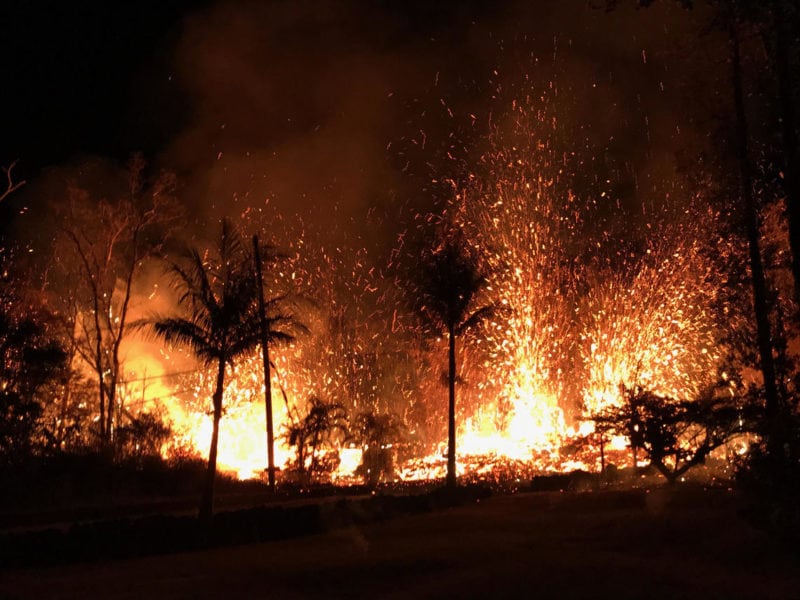Latest News

ASTER image acquired May 6 picks up hotspots on the thermal infrared bands – shown in yellow. These hotspots are newly formed fissures and lava flows. Photo Credit: NASA
The eruption of Kilauea Volcano on the island of Hawaii triggered a number of gas- and lava-oozing fissures in the East Riff Zone of the volcano. Kilauea has been erupting continuously since 1983, but in late April and early May, the volcanic eruption took a dangerous new turn, and the fissures and high levels of sulfur dioxide gas prompted evacuations in the area. By Monday, slow-moving lava flows had consumed 35 homes in a community of 1,500 people.

Massive sulfur dioxide plumes, extracted from ASTER’s multiple thermal bands, are shown here in yellow and green. Photo: NASA
Images taken from the Advanced Spaceborne Thermal Emission and Reflection Radiometer (ASTER) onboard NASA‘s Terra satellite picked up these new fissures, showing vegetation and old lava flows with hot spots that were detected by Aster’s thermal infrared bands, indicating the newly formed fissures and new lava flow. The images acquired on Sunday also show plumes of sulfur dioxide gas, a toxic gas that occurs naturally in magma. Sensors onboard the Ozone Mapping Profiler Suite (OMPS) sensor on the Suomi NPP satellite, as well as ASTER sensors have been helping monitor the elevated concentrations of sulfur dioxide.

A new fissure erupted in the evening of 5/5/18, beginning with small lava spattering at about 8:44 p.m. local time. By 9:00 p.m., lava fountains as high as about 70 m (230 ft) were erupting from the fissure. Photo: United States Geological Survey
On April 30, the floor of Kilauea’s crater began to collapse. Earthquakes followed, including one that measured magnitude 6.9, and lava was pushed into new underground areas that eventually broke through the ground.
Kilauea is the youngest and southeastern-most volcano on the island, and one of the world’s most active volcanoes.
Stay connected and get ahead with the leading source of industry intel!
Subscribe Now